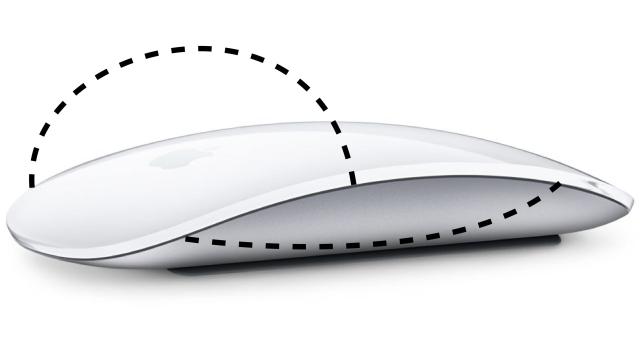For many years, I’ve found it pretty easy to just ignore the Magic Mouse — whose sleek design is strangely missing a few parts that Apple, an ergonomically-minded company, must’ve meant to include to support a user’s palm, thumb, and pinky finger. But now that I’m working at a real desk inside a real office at a company that hands out Magic Mice by default, I can no longer look the other way as Apple continues this charade.
When Apple completed the original Magic Mouse design and beamed the final CAD drawings to Shenzhen prior to its 2009 launch, I wonder if the company simply goofed up and forgot to include the file with the parts that stopped customers’ hands from stinging like from bees, or scrunching up into small bear’s claws after a month or two.
I imagine exasperated Apple industrial designers were scrambling around the company’s Cupertino, California offices when it was subsequently released, attempting to learn how, exactly, the Magic Mouse had made its way through Apple’s coveted supply chain and into retail stores without the little parts that make it so your hands don’t hurt real bad.
Apple is a busy company with many, many products that cost less per day than drinking coffee at one of those expensive coffee places. But after eight whole years, I find it odd that Apple has not found time to just own up to the error and rerelease the Magic Mouse in the form I can only assume it originally intended to sell in.
In Apple’s defence, many people seem very happy with the nearly-complete design of current Magic Mice. But if you feel a bit fed up with waiting for Apple to address this goof after all these years, I have good news for you: You can take matters into your own hands and save Apple the trouble.
All you need is about 25 bucks worth of silicone.

1. The first and perhaps most important part that Apple (seemingly) omitted was cleverly reverse-engineered many years ago by Honda racing parts company Hybrid Racing. This ergonomic chunk of silicone with a little suction cup at the bottom, onto which you can gently rest your palm, will cost you $US12 ($16), and boy is it worth it.
2. Next, you’ll need the part that was supposed to provide a place for your fingers to go before your hand becomes a gnarled stub. I like these $US12.95 ($18) MagicGrips from an Apple accessories company called ElevationLab.
3. Finally, stick the blob of white silicone on top of your Magic Mouse and place the black MagicGrips onto the sides. I prefer the optional “XL thumb grip” (pictured above).
And… that’s it. You’re done! Enjoy your beautiful, now-complete Magic Mouse, ready to be used by human hands as I am positive Apple intended.
(Total costs including Magic Mouse 2: $US103.95 ($137))

